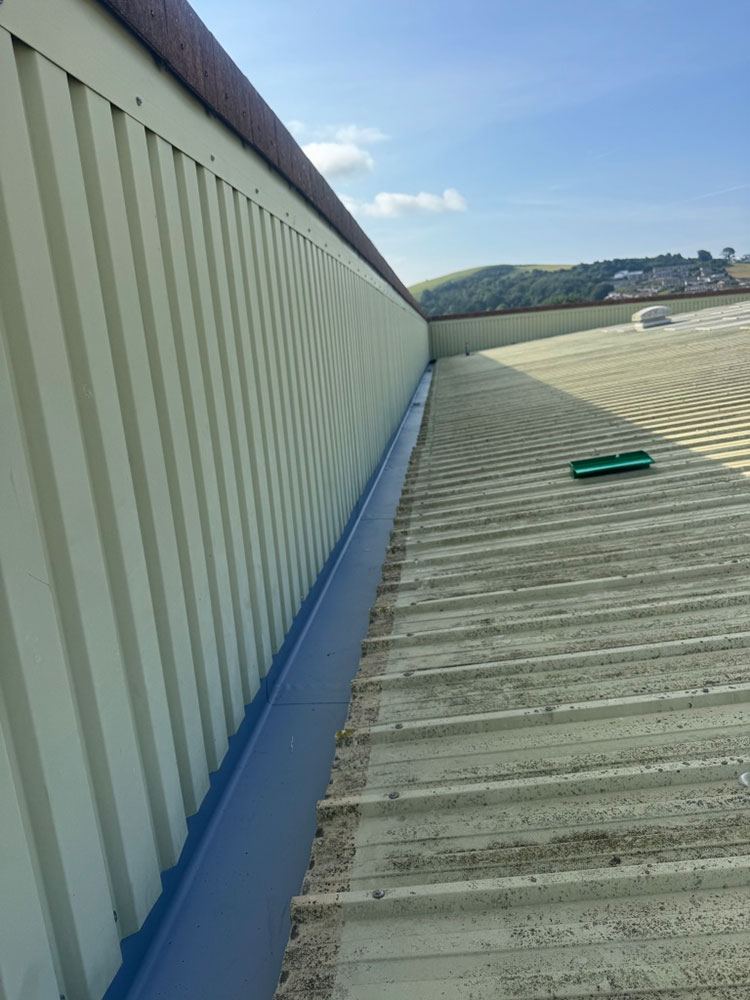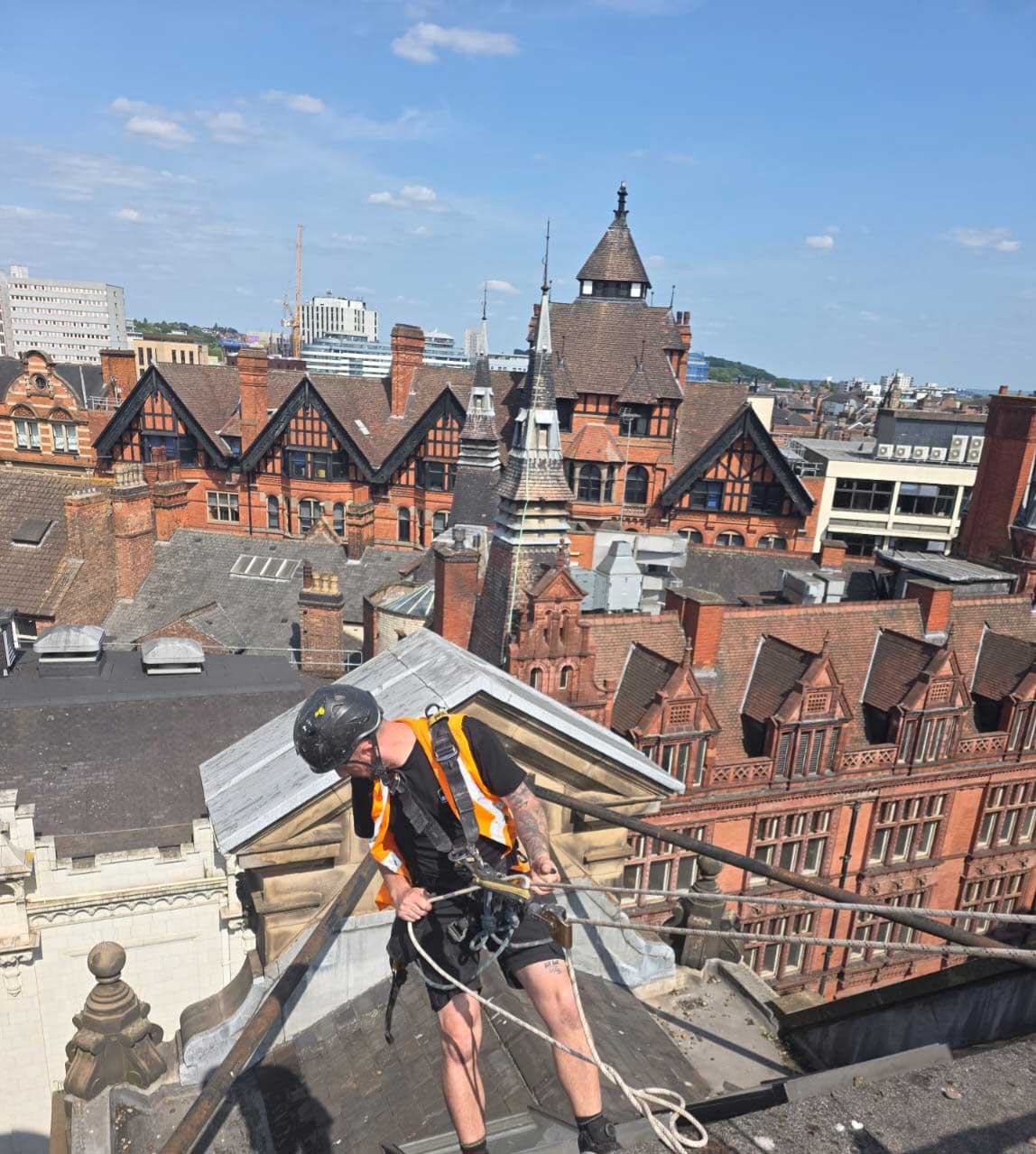
Retail parks are more than a collection of stores—they are branded destinations, customer-facing environments, and revenue-generating assets. But while attention often centres on façades and interiors, the roof quietly performs one of the most critical roles: protecting stock, staff, and structure.
Yet every roof ages. Whether due to weathering, wear, or material fatigue, refurbishments become inevitable. When the time comes, retail parks must handle roofing works with care—foot traffic, brand perception, and business continuity all hang in the balance.
Here’s what retail operators and asset managers should keep front of mind when preparing for a successful roof refurbishment.
1. Managing Foot Traffic Below: Safety and Continuity
Retail parks differ from industrial units in one major way: they’re busy. Customers, staff, delivery teams, and maintenance contractors all move beneath the roofline daily. A refurbishment overhead introduces risk and disruption.
Key Considerations
-
Public Safety: Scaffolding, hoisting equipment, and overhead works pose hazards to foot traffic. Clear demarcation, debris netting, and protective walkways must be planned early.
-
Access Routes: Entrances must remain usable throughout. Coordinating work in phased sections or during off-peak hours can reduce interference.
-
Working Hours: Night-time or early morning shifts may be necessary to complete intrusive tasks without clashing with retail hours.
Best Practice
-
Collaborate with tenants in advance on peak trading times
-
Use overhead protection gantries to maintain access under live works
-
Consider temporary rerouting of footpaths or access doors during scaffolding phases
A safe, accessible environment ensures customers aren’t deterred and stores aren’t forced to close—preserving income and reputation.
2. Protecting Brand Image: Visual Impact and Customer Confidence
Retail is visual. A well-maintained, modern-looking retail park sends a clear message: this is a quality destination worth visiting. Conversely, visible construction work, mess, or poorly managed worksites can damage a brand’s appeal.
Potential Risks to Brand Perception
-
Visible Disrepair: Leaks, ceiling stains, or buckets in public spaces give the impression of neglect.
-
Unattractive Worksites: Scaffolding, materials left on-site, or untidy fencing can look unprofessional if not handled carefully.
-
Noise and Dust: Even unseen roof work can be heard or felt inside stores, affecting customer experience.
Brand-Sensitive Strategies
-
Use discreet branding or screening on scaffolding to maintain a polished exterior
-
Ensure roofline aesthetics match overall visual standards—particularly on customer-facing frontages
-
Coordinate refurbishment with other upgrades (e.g. signage, cladding) to present a unified improvement
Customers may not notice a new roof—but they’ll notice the way it’s installed.
3. Minimising Disruption to Trade
Perhaps the most sensitive issue during any retail roof refurbishment is avoiding operational disruption. Every day a store can’t open fully—or if footfall drops due to customer deterrence—translates into lost turnover, tenant dissatisfaction, and potential reputational damage.
Disruption Challenges
-
Noise Interference: Sawing, hammering, or machinery noise during trading hours can affect ambience or communication.
-
Water Ingress Risk: Stripping or overlaying works must be planned to avoid exposing interiors during poor weather.
-
Delivery Coordination: Roof works can interfere with back-of-house access, refuse collection, or deliveries.
Tactics for Disruption Control
-
Implement phased works across units, completing each bay before moving on
-
Use non-invasive overlay systems when possible to avoid full roof removal
-
Keep emergency cover materials on hand in case of unexpected weather
-
Coordinate directly with tenant facility managers for delivery windows or sensitive times
Strong contractor management and clear communication with tenants are essential to maintain trust and smooth operations.
4. Material Selection and Design Compatibility
Roof refurbishments in retail settings aren’t just technical—they’re visual and functional. Roofing materials must meet performance standards while aligning with the overall look and design language of the site.
What to Consider
-
Aesthetic Cohesion: The visible edge of the roof (fascias, cappings, trims) should match other units. Inconsistent refurbishments can look patchy.
-
Performance Under Foot Traffic: Roofs in retail parks often house plant equipment and are accessed frequently by maintenance teams. Materials should handle regular foot traffic without damage.
-
Thermal Efficiency: Upgrading roof insulation can improve energy performance—a benefit for tenants and sustainability reporting.
Where solar PV or green infrastructure is planned, ensure the new roof is compatible structurally and technically from the outset.
5. Coordination Between Stakeholders
Retail parks involve multiple tenants, contractors, and often separate asset owners. Coordinating refurbishment across this network requires active planning and clear communication.
Key Actions
-
Appoint a principal contractor with retail experience
-
Communicate early with tenants about timelines, staging, and any temporary access changes
-
Create a clear plan for emergency access, fire routes, and out-of-hours issues
-
Conduct joint inspections with store managers to flag sensitive zones
When tenants feel informed and considered, cooperation is far more likely—even during disruptive phases.
6. Planning Around Weather and Seasonal Footfall
Roofing in the UK comes with one unavoidable variable: weather. Combine that with seasonal trading patterns—Christmas, school holidays, sales periods—and timing becomes crucial.
Planning Tips
-
Avoid major works during key retail periods (Q4, school breaks, Easter)
-
Build weather contingencies into project timelines
-
Consider short shutdowns for major stages (e.g. crane lifts) when footfall is lowest
A flexible schedule, agreed in advance, is less likely to fall apart under pressure.
Conclusion
A roof refurbishment at a retail park isn’t a purely technical exercise—it’s an exercise in public relations, brand protection, and operational logistics. By taking foot traffic, image, and disruption seriously, facilities and asset managers can ensure that roofing upgrades enhance, rather than undermine, the performance and perception of the site.
Done right, a new roof is invisible to the customer—and invaluable to the business.









